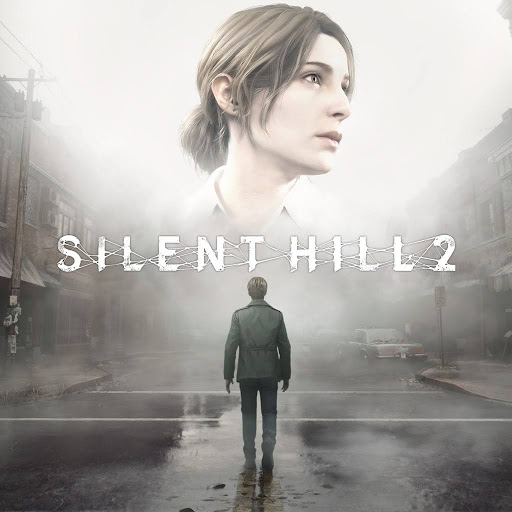
Warning: this article contains some spoilers for Silent Hill 2 and discusses topics of depression and suicide.
After rolling credits on Silent Hill 2 (2024), I was left with a sinking, uncomfortable feeling in my stomach. I wasn’t crying, I wasn’t cheering, I just sat there, shaken by the events I had just seen unfold.
I’ve experienced many emotions after finishing games. I’ve cried, I’ve celebrated, I’ve sat in my chair with a scowl on my face, but rarely am I left feeling like there is an indescribable hole in my very being. What disturbed me the most, however, was that I couldn’t tell if the game left that hole or if it was always there.
Silent Hill 2 is a psychological horror game that follows protagonist James Sunderland, who goes to the mysterious town of Silent Hill in search of his wife. The only problem is, his wife supposedly died three years ago.
The moment he steps foot in town, there is a mystifying and dream-like feeling to this foggy and mysterious town. Beyond the monsters and scary atmosphere, there is always an uncanny feeling that things are just not quite right
As the game progresses, players are dragged further and further down into the depths of Silent Hill, and by extension, James’ mind.
As you delve deeper into Silent Hill, this uncanny and disturbing feeling never goes away. Where other games will scare you with big monsters and jumpscares, this is a softer terror where you aren’t jumping out of your seat. Instead, the game opts for a constant sense of unease and vulnerability.
In fact, the monsters aren’t even the scariest part of the game. Consistently, the creepiest parts of the game are the interactions with other people. Across the game, you run into a variety of characters who are going through similar experiences as the protagonist.
Eddie is an obese man who struggles to grapple with the bullying and condescension he faces for his weight, so he takes out that repressed trauma through violent actions. From the get-go, he comes off as a pathetic man-child, but every subsequent reaction reveals more and more of his violent tendencies and psychological issues.
Angela is a victim of sexual and physical abuse from her family, which gave way to deep-rooted depression and self-loathing. She initially seems like a soft-spoken woman looking for her mother, but as the story progresses, her inner torment and troubled past seep through as her demons torment her, leave her devoid of hope, and push her to suicidal ideation.
Maria is the most important person to cross James’ path in the game as she looks like the spitting image of James’ late wife. With every other character, James seems somewhat unfazed by his interactions with them, but with Maria, he is visibly left confused, disturbed, and intrigued.
Despite interacting with all of these other characters, there is a heavy sense of isolation that permeates the game as each character pushes James away.
While Maria attaches herself to James, she ultimately only highlights James’ emotional isolation through her seemingly artificial nature.
Because of this, none of these characters are allowed to properly process their emotions. The stories of Eddie and Angela not only reveal a spectrum of responses to traumatic events but also serve as cautionary tales as to where that sense of loneliness, despair, and isolation can bring people.
Silent Hill is ultimately a reflection of one’s inner psyche, with each person’s experience being tailored to their torment. Angela sees a world on fire and a monster that resembles two people on a bed frame, symbolizing her past abuse. Eddie finds food everywhere and is tormented by the same man over and over again, no matter how many times he kills him.
James finds a variety of creatures that represent his inner guilt, isolation, and sexual repression. In particular, the iconic Pyramid Head resembles a butcher or executioner, and he frequently lashes out violently at other beings, which represents both James’ pent-up anger and aggression and his need for guilt and punishment for his wife’s death.
Like the other monsters, Pyramid Head is ultimately a guide that forces James to confront his inner self. Like his emotions, he can’t run from him and every encounter signifies a turning point in James’ character, pushing him further to confront his own guilt and denial.
Ultimately, however, confronting and accepting the truth can destroy a person. It made Eddie a homicidal maniac. It leaves Angela without any hope, and she ultimately is consumed by her pain and torment. Even Maria is left changed for the worse after she discovers the truth about herself.
This confrontation with the truth is the true horror of Silent Hill 2. Sure, there are scary environments and monsters, but ultimately what those represent shows the truly disturbing nature of this game.
Like any good horror story, the game leaves the audience with more questions than answers. Can we truly move on from the horrible things we’ve done? How do we cope with loss and accept the pain and potential guilt that comes with it? What does self-acceptance truly look like?
This lack of answers is the fundamental horror of Silent Hill 2. This lack of conclusiveness and resolution to questions so pivotal to the way we see and interact with the world, left me wondering how we confront that indescribable hole that exists in us, and the only answer I can muster is … I don’t know.













